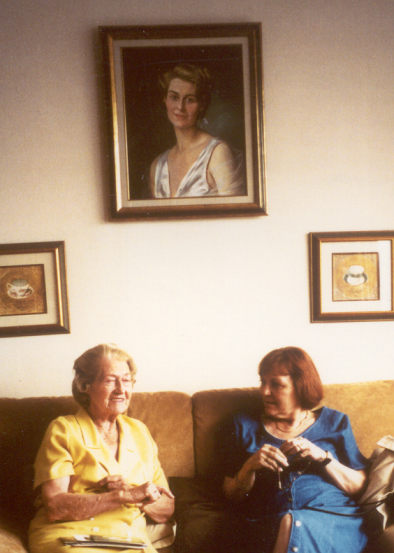
Photo by Deena Mullininx
Bibau, Bibauwj, Bijbau, Biebouw Familes of Belgium and Netherlands

|
The Bibau/Bibauw/Bebout/Beabout family is an anomaly in our family tree. Until July 2002 we thought that there was no connection between our paternal Gamber ancestry and maternal Hemminga ancestry until our parents wed in Miami, Florida. Now we know there are other connections: we have second cousins once removed from a Bebout marriage into the Gamber line in 1942 in Pennsylvania, third cousins from an Armstrong marriage to a Beabout in about 1893, and second cousins from a Hemminga marriage to a Bibauw in 1946 in Belgium. (All the cousins are our generation, born in the 1940s.) The American cousins are third cousins to each other. The common ancestor between the US and Belgian cousins was born before 1616, making them 10th cousins 3 times removed. (The generational difference is because the American immigrants married and had children at an earlier age than their European cousins.) And there is yet another connection: in 1690, immigrant Jan Pietersz Bibau married the widow Metje Martins Beekman. Her first husband was Cornelis Cornelisz Van Der Hoeven, an ancestral uncle.
base image source Route 66
By 1400, the family Bibau was firmly established in and around Tielt, Flanders (now part of Belgium). They owned large farms (hoeven) and town property, and some reached high political office and/or were professionals. At least one was in the cloth (laken) trade. The family prospered and multiplied.
In Flanders, the reformation was felt early. Most or all of the Bibaus became Protestants by about 1550. When the Habsburg repression started they likely became closet Protestants, but after Dutch (Protestant) control of northern Flanders was stabilized most of the family crossed the border in 1636 to settle in the free north. Those who crossed the border are listed as dead in the records of the Catholic church which they left. This entry, which presumably means "dead in the Lord," has confused some researchers who did not then look north of the border. This confused me to at first - four people dead on the same day???? They first settled in and around Aardenburg, in what is now the Netherlands province of Zeeland. They soon acquired - or possibly already had - land. There the spelling of the name later became Bijbau, and some members were named to the Dutch nobility for their services in the 80 Years' War.
The eldest son, Pieter Simons Bibau, remained in what is now Belgium with the family lands. This in no way meant a split in the family - wills reference back and forth. Nonetheless, most of Pieter's descendants eventually returned to the Church of Rome. One line of descent are my Bibauw cousins in Belgium. Another line settled on the spelling Biebouw. Many still live in the Tielt area.
The Catholic reconversion was not complete. In 1687 Jan Pieters Bibau, son of Pieter Simons, emigrated to the New World as a Protestant. The family name in the US used the French spelling Bebout (silent "t"), which soon became pronounced in the English way (bee - bout). He and his offspring were fruitful - the Bebouts and Beabouts (as they soon came to be called) are today numerous. (A 1999 directory shows 126 Bebouts in the western states and 265 in the mid-Atlantic states.) Along the way another spelling variation appeared: Beabout. This was pronounced bee-bout at first, but then some said bee-ah-bout. The information we have on the North American branch of the family is in our Gamber database.
This section contains information on the European lines of descent from Walter Bibau, born before 1450 probably in Tielt, Flanders. The primary data are from:
Our interest in this line originated from meeting our cousin Jopie Hemminga and her son Paul Bibauw. (Note that under Dutch and Belgium law a woman does not change her surname when she marries.) Jopie provided me with a copy of the Maertens-Verkinderen work, a marvelous piece that includes not only straight genealogy but also many stories including ancient town records involving Bibau's who may or may not be related.
A note on spelling: "correct" spelling is a very modern concept. For example, a given individual may be recorded as Symoen, Symon, or Simon. I have generally adopted one version (in this case Simon) in order to make it easier to find individuals. That does not suggest correctness. Look for alternatives. A very common variation is i, ei, ij or y (actually ij merged into one letter).
The name Bibau is also found in Sweden. I haved found no indication that there is any connection with the Flemish/Dutch line. Bibow has been suggested as a variation of Bibau. That is a recognized spelling in Germany, and pronounced differently. (My guess is that all Bibau variations were originally pronounced the same way - bee-bow in American English.) No connection has been found.
Dan Gamber
last update 13 March 2007